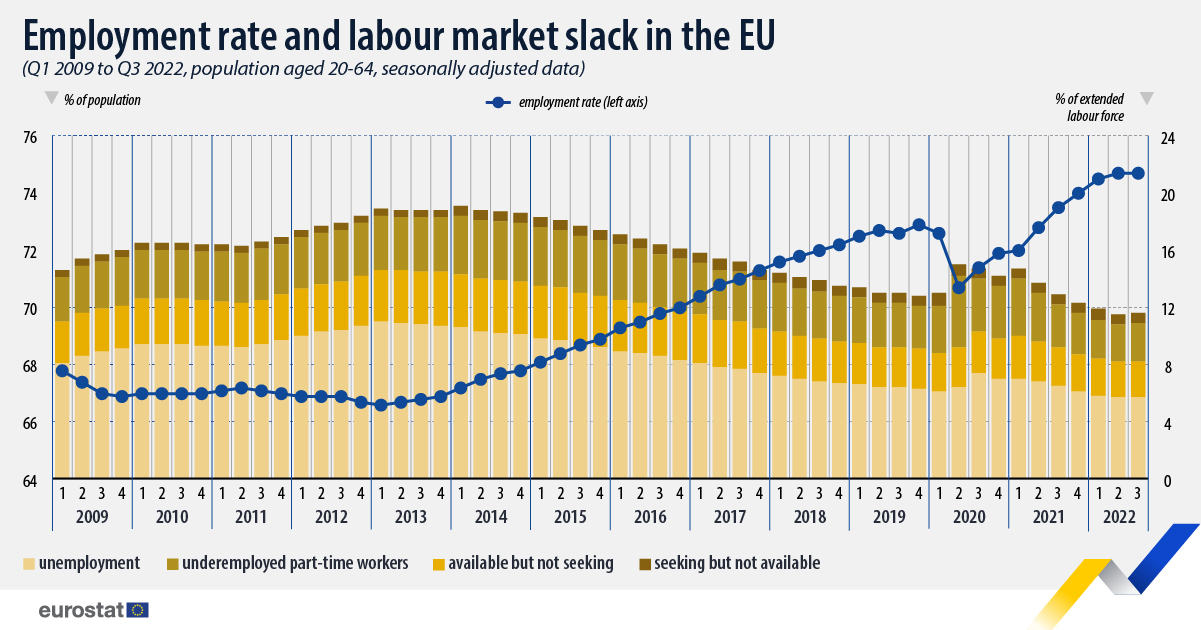Employment and labour market slack stable in Q3 2022
In the EU, the employment rate of people aged 20-64 stood at 74.7% in the third quarter of 2022, stable compared with the second quarter of 2022.
The labour market slack, which comprises all people who have an unmet need for employment and of which one of the main components is unemployment, amounted to 11.5% of the extended labour force aged 20-64 in the third quarter of 2022, also stable compared with the second quarter 2022.
This information comes from data on the labour market in the third quarter of 2022 published recently by Eurostat. This article presents only a handful of findings from the more detailed Statistics Explained article.
Source datasets: lfsi_emp_q and lfsi_sla_q
While the employment rate remained stable in the EU, changes between the second quarter of 2022 and the third quarter of 2022 were observed across the EU Member States for which data were available. The highest increases were recorded in Bulgaria (+0.8 percentage points; pp), Belgium (+0.7 pp) as well as in Portugal and Cyprus (both +0.4 pp).
Source dataset: lfsi_emp_q
While employment rose in 9 EU Member States, it remained stable in Latvia and decreased in 16 Member States, with the biggest decreases recorded in Luxembourg and Ireland (both -0.8 pp) as well as in Germany, Croatia and Malta (all -0.5 pp).
For more information
- Statistics Explained article on EU labour market - quarterly statistics
- Thematic section on the EU labour force survey
- Statistics Explained article on EU labour force survey
- Statistics Explained article on EU labour force survey - correction for breaks in time series
- Database on EU Labour Force Survey
- Education Corner workbook on the labour market
Methodological notes:
- Romania: data for the third quarter of 2022 not available.
- The extended labour force is the total number of people employed plus unemployed, plus those seeking work but not immediately available, plus those available to work but not seeking. In this article, data cover population aged 20 to 64.
- This article uses quarterly and seasonally adjusted data from the EU Labour Force Survey (EU-LFS) data.
- As of the third quarter of 2022, Eurostat is receiving the data earlier than before, allowing it to publish data two weeks earlier than for previous quarters. Consequently, starting with the data for the third quarter of 2022, Eurostat disseminates EU-LFS figures approximately 75 days after the end of the reference quarter.
If you have any queries, please visit our contact us page.


